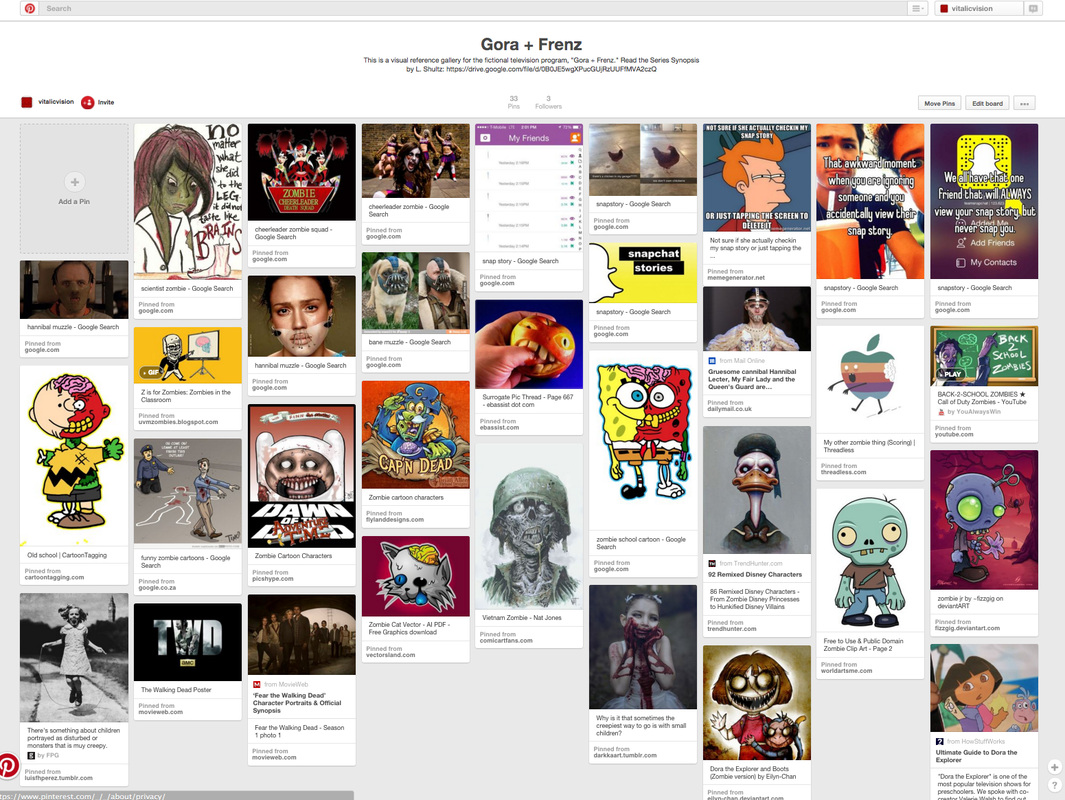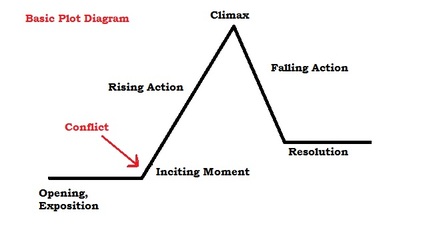FYI: The various steps of this assignment are worth participation points. The FINAL VERSION of this project counts as a 100 pt writing assignment.
If you keep up with each due date, I will be able to offer you feedback. Revisions are encouraged and expected.
See BELOW for an overview of this assignment and initial due dates, and use the "Categories" section to the right to easily skip to each step/component of the project.
Overview - About this Assignment
In Electronic Media II, you not only produce a television show – you come up with a detailed idea for your own creative television series.
How many times have you said, “This would make an awesome TV show!” or, when watching a show, “I could totally write that!?” All of these series got their start somewhere… and, many times, they began with the creative vision of a screenwriter and a Series Bible.
Are we talking about a religious text? Well, not exactly, but actually? Sort of…
“A bible for screenwriters is a reference document used for information on a series’ characters, settings, and other elements.” (shamelessly from the Wikipedia entry for Bible (Writing)).
Get creative! Many times, students find it easier to write about something they know a lot about from personal experience. What, for example, might Ms. Shultz write a series about? “The Life and Times of TPS Television,” perhaps? You might also find it fun to write a parody of a show or movie you’ve seen, or an adaptation of a novel you’ve read (“The Great Gatsby” – the miniseries?). For this assignment, you will come up with your own unique idea that could be developed into at least 6 episodes.
Deadlines
DUE COMPONENT
Thurs 4/26 Series Synopsis
Tues 5/1 Visual References
Fri 5/11 Series Outline
Thurs 5/17 Character Summaries
Thurs 5/24 Pilot Episode Opener
Tues 5/29 Format Page, Creator’s Statement, and Promo Poster - 3 components!
Thurs 5/31 SERIES BIBLE DUE proofread, printed, and assembled in the following order:
(last updated 4/19/2018 by Ms. S.)
Grading
The submission of each Step above will be marked at 10 participation points for being on time (5 if it's late) in the grade book, for 60 participation points.
Your FINAL SERIES BIBLE will be graded on a 100 pt. rubric.
An additional 10 points will be awarded based on your completion of the peer review and reflection activity during the final exam period.
Credits
The following steps of this assignment reference the “Freaks and Geeks” Series Bible from time to time – the writer actually used the document at the following link to sell the series idea!
http://leethomson.myzen.co.uk/Freaks_and_Geeks/Freaks_and_Geeks_Bible.pdf
If you’re interested, you can watch the series:
http://www.youtube.com/watch?v=2WRaiBjSZ2k&list=PLij5nPeKli3X-gahFw1M951qRZdGAl8kF
This entire assignment was adapted from the original guide by Mike Jones. For more information, visit www.mikejones.tv
If you keep up with each due date, I will be able to offer you feedback. Revisions are encouraged and expected.
See BELOW for an overview of this assignment and initial due dates, and use the "Categories" section to the right to easily skip to each step/component of the project.
Overview - About this Assignment
In Electronic Media II, you not only produce a television show – you come up with a detailed idea for your own creative television series.
How many times have you said, “This would make an awesome TV show!” or, when watching a show, “I could totally write that!?” All of these series got their start somewhere… and, many times, they began with the creative vision of a screenwriter and a Series Bible.
Are we talking about a religious text? Well, not exactly, but actually? Sort of…
“A bible for screenwriters is a reference document used for information on a series’ characters, settings, and other elements.” (shamelessly from the Wikipedia entry for Bible (Writing)).
Get creative! Many times, students find it easier to write about something they know a lot about from personal experience. What, for example, might Ms. Shultz write a series about? “The Life and Times of TPS Television,” perhaps? You might also find it fun to write a parody of a show or movie you’ve seen, or an adaptation of a novel you’ve read (“The Great Gatsby” – the miniseries?). For this assignment, you will come up with your own unique idea that could be developed into at least 6 episodes.
Deadlines
DUE COMPONENT
Thurs 4/26 Series Synopsis
Tues 5/1 Visual References
Fri 5/11 Series Outline
Thurs 5/17 Character Summaries
Thurs 5/24 Pilot Episode Opener
Tues 5/29 Format Page, Creator’s Statement, and Promo Poster - 3 components!
Thurs 5/31 SERIES BIBLE DUE proofread, printed, and assembled in the following order:
- Promo Poster (cover)
- Format Page
- Series Synopsis
- Series Outline
- Character Summaries
- Visual References - Look + Feel
- Creator’s Statement
- PILOT EPISODE opener
(last updated 4/19/2018 by Ms. S.)
Grading
The submission of each Step above will be marked at 10 participation points for being on time (5 if it's late) in the grade book, for 60 participation points.
Your FINAL SERIES BIBLE will be graded on a 100 pt. rubric.
An additional 10 points will be awarded based on your completion of the peer review and reflection activity during the final exam period.
Credits
The following steps of this assignment reference the “Freaks and Geeks” Series Bible from time to time – the writer actually used the document at the following link to sell the series idea!
http://leethomson.myzen.co.uk/Freaks_and_Geeks/Freaks_and_Geeks_Bible.pdf
If you’re interested, you can watch the series:
http://www.youtube.com/watch?v=2WRaiBjSZ2k&list=PLij5nPeKli3X-gahFw1M951qRZdGAl8kF
This entire assignment was adapted from the original guide by Mike Jones. For more information, visit www.mikejones.tv



 RSS Feed
RSS Feed
